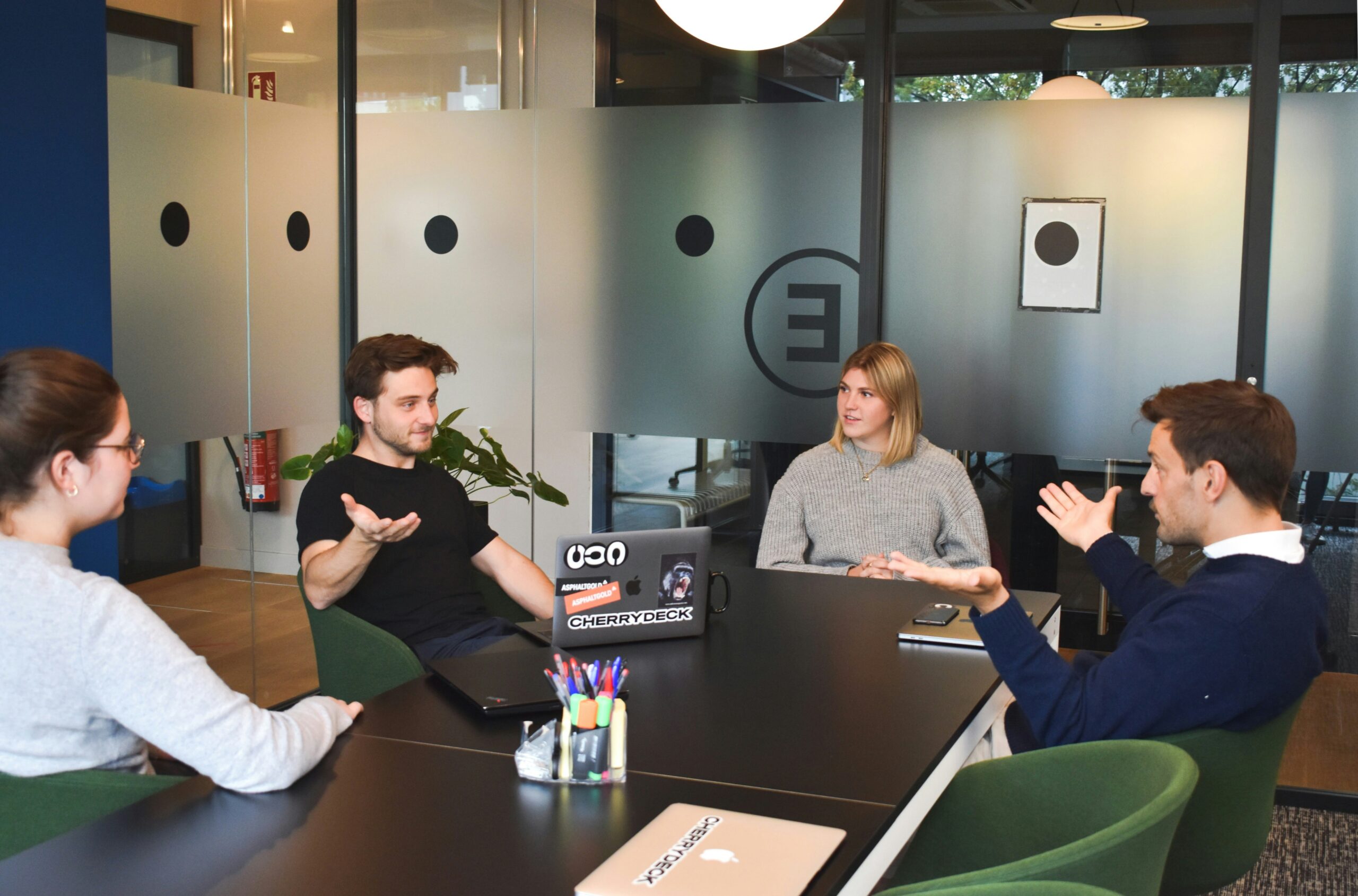Introduction
The landscape of talent acquisition has undergone a remarkable transformation over the past few decades, evolving from traditional recruitment methods to sophisticated strategies that leverage the latest in digital technology and social media. This evolution reflects broader changes in the workforce and workplace, as well as advances in technology and shifts in societal attitudes towards work and employment. In this introductory section, we will explore the historical progression of talent acquisition, introduce the concept of “Talent Acquisition Redefined” for the modern workplace, and underscore the importance of adopting new strategies in the digital age.
Evolution of Talent Acquisition
From Traditional to Technological
The journey of talent acquisition began with simple, direct methods of hiring, such as personal referrals and newspaper advertisements. As the corporate world expanded, so did the need for more systematic recruitment processes, leading to the rise of employment agencies and later, corporate HR departments. The advent of the internet and digital technology revolutionized this landscape, introducing job boards, social media recruiting, and sophisticated applicant tracking systems (ATS). This technological leap has not only made the process more efficient but also expanded the reach of companies, allowing them to access a global talent pool.
Talent Acquisition Redefined
Embracing the Modern Workplace
The concept of “Talent Acquisition Redefined” embodies a strategic, holistic approach to attracting, hiring, and retaining the best talent in the modern workplace. It recognizes that in today’s fast-paced, technology-driven world, talent acquisition is not just about filling vacancies but about building a strong, cohesive workforce that can adapt and thrive in an ever-changing environment. This redefined approach emphasizes employer branding, employee value proposition, and the use of data analytics to make informed hiring decisions. It also stresses the importance of diversity, equity, and inclusion (DEI) in creating a vibrant, innovative workplace culture.
The Importance of New Strategies in the Digital Age
Navigating the Digital Landscape
In the digital age, the competition for top talent is fiercer than ever, and the strategies that worked yesterday may not be effective tomorrow. Organizations must therefore be agile, ready to adopt new technologies and methodologies to attract and engage candidates. This includes leveraging social media platforms, enhancing the candidate experience through seamless digital interfaces, and using data-driven insights to inform recruitment strategies. Adapting to these new strategies is not merely an option but a necessity for companies aiming to stay ahead in the talent game.

The Evolution of Talent Acquisition Strategies
Talent acquisition has undergone significant transformations, adapting to technological advancements, changes in workforce dynamics, and evolving societal norms. This evolution reflects a shift from traditional, reactive hiring practices to strategic, technology-driven approaches aimed at attracting and retaining the best talent. In this section, we explore the historical progression of these strategies, the impact of digital transformation, and the emerging trends setting the stage for the future of recruiting.
Historical Overview
Pre-Digital Era: Traditionally, talent acquisition relied heavily on print media advertising, word-of-mouth recommendations, and direct applications to companies. Recruitment was more localized, limiting access to a broader talent pool.
Rise of the Internet: The advent of the internet in the late 20th century began to change the landscape of recruiting, introducing job boards and email communication. This period marked the beginning of a shift towards more widespread and accessible talent acquisition methods.
Corporate and Agency Recruitment: As businesses grew, so did the need for more organized recruitment processes. The establishment of in-house HR departments and the rise of recruitment agencies facilitated a more structured approach to talent acquisition.
The Digital Transformation
Advent of Social Media and Job Platforms: Platforms like LinkedIn, Indeed, and Glassdoor have revolutionized recruitment, enabling employers to reach a global audience. Social media not only expanded the talent pool but also allowed for targeted recruitment campaigns and employer branding efforts.
Applicant Tracking Systems (ATS): The introduction of ATS transformed the recruitment process by automating the screening of resumes, tracking the progress of candidates, and facilitating better candidate management.
Mobile Recruiting: With the ubiquity of smartphones, mobile recruiting has become a crucial strategy. Companies now ensure their career sites are mobile-friendly, and some even develop apps to streamline the application process.
Emerging Trends in Talent Acquisition
AI and Machine Learning: Artificial intelligence (AI) and machine learning are at the forefront of recruiting innovations. These technologies are used for everything from screening resumes to predicting candidate success, significantly reducing the time and resources required for hiring.
Automated Candidate Screening: AI algorithms can quickly analyze resumes and applications to identify the most suitable candidates, reducing human bias and increasing efficiency.
Chatbots for Candidate Engagement: AI-powered chatbots are being used to engage candidates in real-time, answering queries and guiding them through the application process.
Social Media Recruiting: Beyond LinkedIn, companies are leveraging platforms like Facebook, Twitter, and even Instagram to attract talent. This approach not only broadens the reach but also allows companies to showcase their culture and values in a more engaging way.
Employer Branding: Social media is an effective tool for employer branding, enabling companies to share their work culture, employee testimonials, and behind-the-scenes glimpses into the workplace.
Engagement with Passive Candidates:
Social media platforms enable recruiters to connect with passive candidates who are not actively seeking new opportunities but are open to the right offers.
Focus on Candidate Experience: The candidate experience is becoming a key focus in talent acquisition, with companies striving to make the application process as seamless and engaging as possible. This includes clear communication, feedback loops, and a simplified application process.
Personalization: Personalized communication at various stages of the recruitment process helps in building a positive relationship with candidates.
Transparency: Providing candidates with clear information about the recruitment process, expectations, and timelines contributes to a better candidate experience.
Data-Driven Recruiting: The use of data analytics in recruiting is helping companies make more informed decisions. By analyzing data on candidate sourcing, hiring processes, and employee retention, companies can refine their talent acquisition strategies for better outcomes.
Predictive Analytics: Using data to predict hiring needs, identify the qualities of successful employees, and forecast future trends in talent acquisition.
Performance Tracking: Analyzing the effectiveness of different recruitment channels and strategies to optimize future recruiting efforts.
The evolution of talent acquisition strategies from traditional methods to a sophisticated, technology-driven approach is a testament to the dynamic nature of the job market and the importance of innovation in attracting and retaining top talent. As we look to the future, it is clear that the integration of technology, emphasis on candidate experience, and the use of data analytics will continue to shape the landscape of talent acquisition.

The Role of Employer Branding in Talent Acquisition
Employer branding has become a cornerstone of modern talent acquisition strategies. As companies vie for top talent in an increasingly competitive market, the way they present themselves to potential employees can significantly impact their ability to attract and retain the best candidates. In this section, we explore what employer branding is and why it matters more than ever, followed by practical strategies for building a strong employer brand.
Defining Employer Branding
Employer branding refers to the reputation of a company as an employer and its value proposition to employees, as opposed to its brand image to customers. It encompasses the perceptions and experiences of current, past, and potential employees, as well as the wider public. A strong employer brand communicates what makes a company a desirable place to work, including its culture, values, and the benefits it offers to employees.
Why does it matter more than ever? In the digital age, information about companies is readily available at the click of a button. Prospective employees can easily research a company’s work environment, culture, and employee satisfaction levels before even applying for a job. Additionally, in a market where skilled talent is often in short supply, a strong employer brand can be the deciding factor for candidates choosing between job offers. A positive employer brand helps attract better candidates, reduces hiring costs by lowering turnover rates, and increases overall organizational performance by retaining top talent.
Strategies for Building a Strong Employer Brand
Articulate Your Value Proposition: Clearly define what sets your company apart as an employer. This could be unique cultural attributes, career development opportunities, benefits, work-life balance, or innovative projects. Ensure this value proposition is communicated consistently across all platforms.
Leverage Employee Advocacy: Encourage your employees to share their positive experiences and stories on social media and professional networks. Employee testimonials are powerful endorsements of your employer brand.
Optimize Your Digital Presence: Ensure your career site, social media profiles, and online job postings reflect your employer brand and value proposition. Use engaging content, such as videos, blogs, and behind-the-scenes looks at your company culture to attract potential candidates.
Engage with Your Community: Participate in industry events, conferences, and webinars to showcase your company’s leadership and commitment to the field. Community engagement enhances your brand’s visibility and reputation.
Monitor and Respond to Feedback: Keep an eye on company reviews on platforms like Glassdoor and Indeed. Respond to feedback constructively and implement changes where necessary to improve the employee experience.
Success Stories: Companies like Google and Zappos have set benchmarks in employer branding with their focus on culture, employee engagement, and exceptional work environments. These companies use their unique cultures and employee-centric policies as key messaging points in their recruitment efforts.
Building a strong employer brand requires a consistent and strategic approach. By articulating a clear value proposition, leveraging employee advocacy, optimizing your digital presence, engaging with your community, and responding to feedback, you can attract and retain the best talent in your industry. MME is one of the best Talent Acquisition Companies in India.

Inclusion and Diversity: Central Pillars of Modern Talent Acquisition
The contemporary workspace is increasingly characterized by its commitment to diversity and inclusion, recognizing them not just as moral imperatives but as key drivers of innovation, employee satisfaction, and organizational success. Here, we delve into the significance of diversity and inclusion in enriching the workplace environment and outline actionable strategies for embedding these principles into talent acquisition practices.
The Importance of Diversity and Inclusion
Diversity and inclusion in the workplace go beyond mere representation; they involve creating an environment where diverse perspectives and backgrounds are valued and leveraged to drive creativity and innovation. A diverse workforce brings a variety of viewpoints, experiences, and skills, enriching the workplace environment by:
Enhancing Creativity: Diverse teams are more likely to produce innovative solutions and ideas due to the wide array of perspectives and problem-solving approaches they bring to the table.
Improving Decision-Making: Studies have shown that diverse groups make better decisions, as they consider a broader range of information and viewpoints.
Boosting Employee Engagement and Retention: An inclusive culture fosters a sense of belonging among employees, enhancing their engagement and reducing turnover rates.
Reflecting the Global Market: A workforce that reflects the diversity of the global market is better equipped to understand and meet the needs of diverse customers and clients.
Implementing Inclusive Talent Acquisition Strategies
To build a truly inclusive and diverse workforce, organizations must intentionally design their talent acquisition strategies to minimize bias and promote diversity at every stage of the recruitment process:
Bias-Free Job Descriptions: Utilize language that is inclusive and welcoming to all, avoiding terms that might unconsciously deter certain groups from applying. Tools and services that analyze job descriptions for biased language can be particularly useful.
Diverse Sourcing Channels: Reach out to a broad range of talent sources, including diversity-focused job boards, professional groups, and educational institutions, to attract a diverse applicant pool.
Structured Interviews: Implement structured interviews with a standardized set of questions for all candidates to minimize unconscious bias. Consider using diverse interview panels to ensure multiple perspectives are represented in the evaluation process.
Blind Hiring Practices: Where possible, use blind hiring techniques, such as anonymizing resumes and applications to focus on skills and qualifications rather than demographic characteristics.
Inclusive Employer Branding: Promote your commitment to diversity and inclusion in your employer branding and recruitment marketing. Showcase stories and testimonials from diverse employees to illustrate your inclusive culture.
Continuous Training: Provide regular training for hiring managers and recruiters on unconscious bias and inclusive hiring practices to reinforce the importance of diversity and inclusion in the recruitment process.
Feedback and Measurement: Collect and analyze data on your recruitment, hiring, and retention rates by demographic to identify areas for improvement and track the effectiveness of your diversity and inclusion efforts over time.
Implementing these inclusive talent acquisition strategies demonstrates a commitment to building a diverse and inclusive workforce, ultimately enhancing organizational resilience, innovation, and competitiveness in a global marketplace.

Leveraging Data Analytics in Talent Acquisition
In today’s highly competitive job market, the use of data analytics in talent acquisition is not just a trend but a necessity. Data-driven recruitment leverages statistical analysis and predictive modeling to make hiring more efficient and effective. By analyzing data from a variety of sources, organizations can gain insights into the effectiveness of their recruitment strategies, identify areas for improvement, and make informed decisions that enhance the quality of hires and reduce time-to-hire and cost-per-hire.
Introduction to Data-Driven Recruitment
The significance of data in refining talent acquisition processes cannot be overstated. Through data analytics, companies can analyze patterns, trends, and metrics from past and current hiring cycles to predict future recruitment outcomes. This approach enables organizations to understand better which recruitment channels yield the best candidates, what characteristics top performers share, and how to optimize the recruitment process to attract and retain top talent. By transitioning from a gut-feeling approach to a data-driven strategy, companies can significantly improve their recruitment efficiency and effectiveness.
Case Studies: Success Stories of Data Analytics in Recruitment
Google: Google’s People Analytics team is renowned for applying a data-driven approach to HR decisions, including recruitment. By analyzing interview data, employee performance, and retention rates, Google has refined its hiring processes to focus on predictive indicators of success. This approach has helped Google not only to hire more effectively but also to enhance its employer brand by offering candidates a positive and engaging recruitment experience.
LinkedIn: As a platform that connects professionals worldwide, LinkedIn leverages its vast data on employment trends, skill sets, and job movements to inform its talent acquisition strategies. By using data analytics to understand trends in the job market and the skills most in demand, LinkedIn has been able to proactively recruit and retain talent in highly competitive fields.
Xerox: In an effort to reduce attrition rates among its call center staff, Xerox used data analytics to identify the characteristics of employees who were most likely to stay with the company for longer periods. By focusing on these predictive factors during the recruitment process, Xerox was able to significantly reduce its turnover rates, resulting in substantial cost savings.
These examples highlight the transformative potential of data analytics in recruitment. By adopting a data-driven approach, companies can not only streamline their recruitment processes but also enhance their overall talent acquisition outcomes, ensuring they remain competitive in the talent market.

The Human Touch in a Tech-Driven World
As the recruitment landscape becomes increasingly dominated by technological innovations, from AI-driven screening tools to automated communication systems, the importance of human interaction in the recruitment process has never been more critical. While technology can streamline and enhance efficiency, the human touch fosters connection, understanding, and trust—elements that are essential in attracting and retaining top talent. In this section, we explore how to balance technology with human interaction and offer strategies for personalizing the candidate experience.
Balancing Technology and Human Interaction
Complement, Don’t Replace: Use technology to complement human interactions rather than replace them. Automate routine tasks to free up time for recruiters to engage in meaningful conversations with candidates.
Quality Over Quantity: While technology can increase the quantity of interactions, focus on the quality of these interactions. Personalized emails, phone calls, and face-to-face meetings can make a significant difference in a candidate’s perception of the company.
Emphasize Emotional Intelligence: Equip your recruitment team with emotional intelligence skills to better understand, empathize, and connect with candidates. Human insight is crucial in interpreting the nuances of candidate responses and behaviors that technology may overlook.
Strategies for Personalizing the Candidate Experience
Tailored Communication: Customize communication to reflect the candidate’s profile, interests, and stage in the recruitment process. Use their name, reference specific details from their application, and tailor the message to resonate with their career aspirations.
Feedback Loops: Establish feedback loops to gather insights from candidates about their experience. Use this feedback to continuously improve the recruitment process and make candidates feel valued and heard.
Candidate-Centric Interviews: Design interview processes that are not only evaluative but also informative and engaging for the candidate. Share insights about the company culture, growth opportunities, and team dynamics to help candidates visualize their future with the company.
Onboarding Engagement: Extend the personalized experience beyond the hiring phase into onboarding. A warm welcome, clear communication about what to expect, and introductions to key team members can make new hires feel integrated and valued from day one.
By skillfully blending technology with the human touch, organizations can create a recruitment experience that is efficient, effective, and genuinely engaging. This balance is crucial for building strong relationships with candidates, ultimately leading to a more vibrant, committed, and satisfied workforce.
Talent Acquisition Post-Pandemic: Adapting to the New Normal
The COVID-19 pandemic has dramatically altered the business landscape, particularly in the realm of talent acquisition. Companies have been compelled to reassess and adapt their recruitment strategies to navigate the challenges and opportunities presented by this new reality. Here, we explore the impact of the pandemic on recruitment and delve into best practices for attracting and retaining talent in an era where remote work has become the norm.
Impact of the Pandemic on Recruitment
Shift to Virtual Recruitment: The necessity for social distancing accelerated the shift towards virtual interviews and assessments, making digital proficiency essential for both recruiters and candidates.
Increased Demand for Flexibility: The pandemic underscored the importance of work-life balance, leading to a heightened candidate expectation for flexible working arrangements.
Redefinition of Employer Value Proposition: Companies are now evaluated based on their response to the pandemic, their support for employees during crisis periods, and their ability to adapt to remote work.
Adapting Strategies for Remote Recruitment and Onboarding
Optimize Virtual Interviewing Techniques:
Utilize high-quality video conferencing tools to ensure a seamless interview experience.
Train hiring managers on best practices for conducting virtual interviews to maintain engagement and assess candidate fit effectively.
Enhance Digital Presence:
Revamp the careers page to reflect the company’s remote work culture and values.
Leverage social media and online platforms to showcase the company’s adaptability and commitment to employee well-being during the pandemic.
Implement Virtual Onboarding Processes:
Develop comprehensive virtual onboarding programs that include virtual tours, online training sessions, and digital meet-and-greets with team members.
Provide new hires with clear guidelines and resources to navigate their roles remotely successfully.
Promote a Strong Remote Work Culture:
Foster an environment of trust and flexibility that supports remote work while ensuring productivity and engagement.
Encourage regular virtual team meetings and one-on-one check-ins to maintain connectivity and team cohesion.
Prioritize Health and Well-Being:
Integrate well-being programs and resources into the employee benefits package, focusing on mental health, physical health, and work-life balance.
Communicate openly about the importance of health and offer support through flexible scheduling and access to wellness resources.
In response to the pandemic, talent acquisition strategies have evolved to prioritize flexibility, digital proficiency, and employee well-being. By adapting to these changes, companies can not only navigate the challenges of the post-pandemic world but also attract and retain talent in a landscape forever altered by the experience of COVID-19.

Conclusion: The Future of Talent Acquisition
As we navigate through the transformative landscape of talent acquisition, it’s clear that the strategies and practices within the field have undergone significant evolution. From embracing digital transformation and leveraging data analytics to prioritizing diversity, inclusion, and the human touch, the future of talent acquisition is both dynamic and promising. In this concluding section, we recap the essential points discussed and explore predictions for the future of talent acquisition, offering guidance for HR professionals and recruiters on their next steps.
Summarizing Key Takeaways
Digital Transformation: The integration of digital technology, including AI, machine learning, and social media, has revolutionized talent acquisition, making processes more efficient and expanding the reach to a global talent pool.
Importance of Employer Branding: A strong employer brand is crucial in attracting top talent, emphasizing the need for companies to communicate their values, culture, and employee value proposition effectively.
Diversity and Inclusion: Central pillars of modern talent acquisition, diversity and inclusion enrich the workplace and drive innovation by bringing a wide array of perspectives and experiences.
The Human Touch: Despite technological advancements, maintaining human interaction in recruitment is essential for fostering connection and trust with candidates.
Adaptation Post-Pandemic: The COVID-19 pandemic has necessitated the adoption of remote recruitment and onboarding practices, alongside a greater emphasis on flexibility and employee well-being.
Looking Ahead
Hybrid Work Models: As companies continue to adapt to the new normal, hybrid work models that combine remote and in-office work will become more prevalent, requiring recruiters to further refine their strategies for remote recruitment and onboarding.
AI and Automation Expansion: The use of AI and automation in talent acquisition will expand, not just in screening and selection processes but also in personalizing the candidate experience and enhancing decision-making with predictive analytics.
Focus on Skills-Based Hiring: The shift towards skills-based hiring will accelerate, with companies prioritizing candidates’ skills and potential over traditional qualifications, such as degrees and previous job titles.
Continuous Learning and Adaptation: HR professionals and recruiters must commit to continuous learning and adaptation, staying abreast of technological advancements and evolving workplace expectations to attract, hire, and retain the best talent.
The future of talent acquisition is poised for further innovation, shaped by ongoing technological advancements and shifting workforce dynamics. By embracing these changes and focusing on strategic, data-driven, and candidate-centric approaches, HR professionals and recruiters can ensure their organizations remain competitive and appealing to top talent in an ever-evolving landscape.




